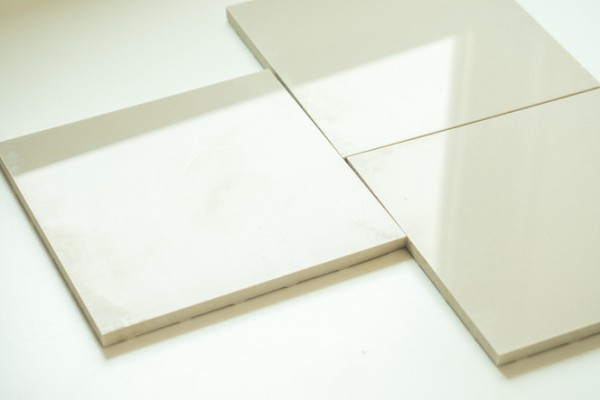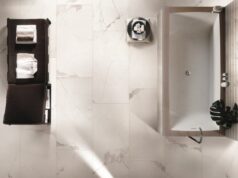
Choosing between rectified and non‑rectified tiles might seem like a small detail, but it has a big impact on the look, cost and installation process of your renovation. Whether you’re aiming for a modern minimal finish or a more relaxed, rustic feel, understanding the differences ensures you get the outcome you want.
What are rectified tiles?
Rectified tiles are ceramic or porcelain tiles that have been mechanically trimmed after firing to create exact, square edges and a consistent size. This precision allows grout gaps as narrow as 1–3mm, producing a sleek, seamless surface ideal for contemporary spaces.
They often feature a subtle bevel to reduce edge chipping—a helpful touch given their sharpness.
What are non‑rectified tiles?
These are standard tiles—sometimes called cushion-edged or soft-edged—that retain slightly rounded edges post-firing. This natural variability means wider grout lines (typically >3 mm) are needed to accommodate manufacturing tolerances.
The uneven edges lend a traditional, handcrafted charm and may make the tiling process more forgiving.
Side-by-side comparison
| Feature | Rectified tiles | Non‑rectified tiles |
| Edge precision | Exact, squared edges | Slightly uneven, natural edges |
| Grout gap | Very narrow (1–3 mm) | Wider (>3 mm) |
| Visual style | Modern, minimal, seamless | Rustic, cozy, traditional |
| Cleaning & maintenance | Easier (less grout to clean) | More grout means more maintenance |
| Installation complexity | Requires precision, flat substrate, pros | More forgiving, DIY-friendly |
| Cost | Higher material + installation costs | Lower cost and easier to install |
Why pick one over the other?
Opt for rectified tiles if:
- You want a clean, modern aesthetic with minimal grout lines.
- You’re using large-format tiles (300×300mm+), where precision creates a powerful design impact.
- You can invest in professional installation, including levelling systems.
- You prefer easier cleaning and low‐maintenance grout.
Choose non‑rectified tiles if:
- You’re working with a classic or rustic design where some grout visibility is expected.
- You’re on a tighter budget — the tiles themselves and installation are generally more affordable.
- You’re planning a DIY install — the forgiving edges make it easier to work with.
- Durability is a concern — sanded grout (used with non-rectified tiles) is often more robust in high-traffic areas.
Installation tips
- Rectified tiles require:
- A perfectly flat subfloor, plus levelling systems for large panels.
- Unsanded grout to achieve narrow lines—usually 1–3mm.
- Skilled installers to avoid lippage (uneven edges).
- Non-rectified tiles are:
- More forgiving — variation is masked by grout.
- Installed using sanded grout, ideal for strength and DIY use
Design impact and cost considerations
- Aesthetic: Rectified tiles deliver a continuous, modern canvas, particularly effective with polished or marble-look finishes. Non‑rectified tiles highlight grout patterns and offer a tactile, timeless appeal.
- Grout durability: Unsanded grout (with rectified) can deteriorate faster than sanded grout, requiring more upkeep.
- Budget: Rectified tiles cost more both in material and specialist installation. Expect to pay extra for levelling and unsanded grout.
Final verdict
Neither style is inherently better—it comes down to your design goals, budget and willingness to invest in installation quality:
- Choose rectified tiles for a sleek, sophisticated aesthetic with minimal grout, especially in modern or large-format applications.
- Opt for non-rectified tiles if you prefer a traditional feel, are working to a budget, or planning a DIY installation.





